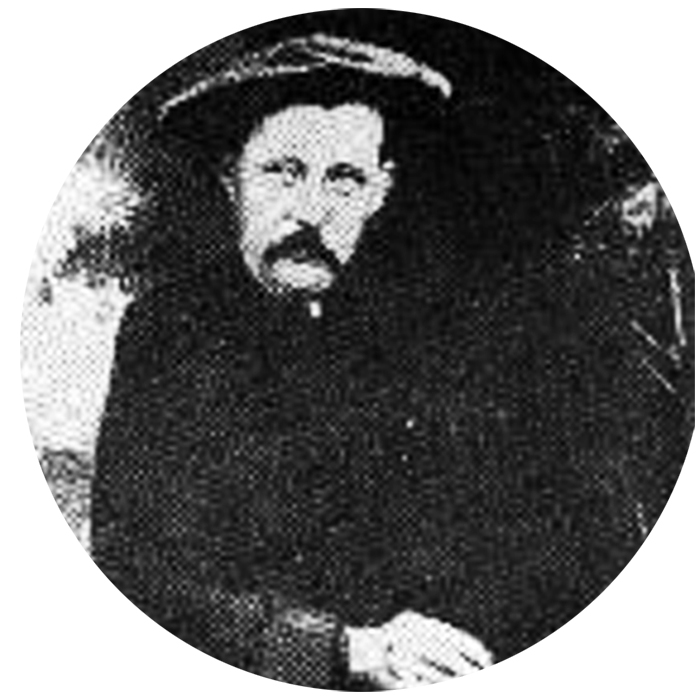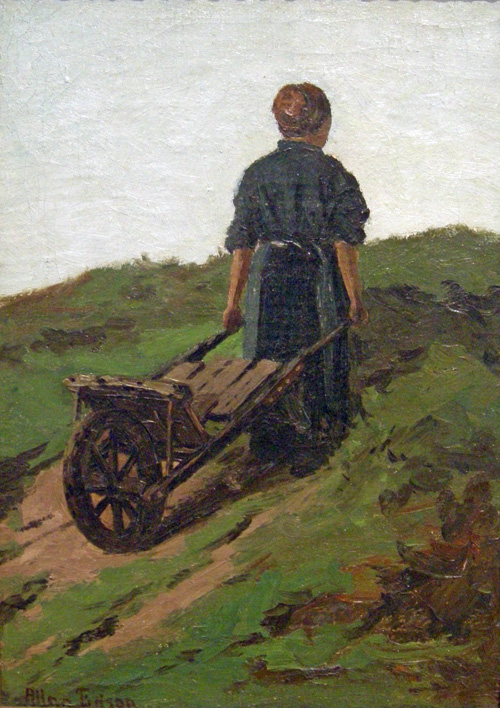Aaron Allan Edson
Aaron Allan Edson (1846-1888) - Artist Biography
Born in Stranbridge, Quebec in 1846, he attended the Stranbridge East Village school in 1852-3. His family moved to Montreal where he got a job as a bookkeeper for an art dealer. His writing was so poor that his employer, A. J. Pell, decided to put him on art work. He met C. R. Jacobi, C. J. Way, and Adolph Vogt and received occasional assistance from each of them. J. C. Baker, from Edson’s home town, was so impressed with his talent that he paid for his study in England around 1864. Edson returned Baker’s kindness by sending him some of his paintings. He began to make his mark as early as 1866, when he was noted not only for his talents, but also for his involvement in art associations.
He was a founding member of the Society of Canadian Artists in 1867 and showed some of his work in its first exhibition the following year. He was also one of the first members of the Ontario Society of Artists, which was founded 1872. When the Royal Canadian Academy was founded in 1879 Edson was made a charter member. In 1866 Edson settled at Glen Sutton, Quebec, where he painted several winter scenes. A. H. Robson noted his work in watercolours and referred to his sense of colour as “very subtle and delightful.”
Edson went to Europe again to sketch for a year. He took a third trip to Scotland and England, and then spent four or five years in Paris where he met and studied under Léon Pelouse. When he returned to Canada he became known for his fine landscapes which attracted the attention of the Marquis of Lorne and Princess Louise who purchased two of his paintings which they gave to Queen Victoria. Although described by his contemporaries as a modest man, he was from 1870 onward considered one of Canada’s foremost landscape painters. Several of his works were influenced by the American Hudson River School of Painting.
Although he lived most of his life in Montreal, Edson did a considerable amount of work in his native Eastern Townships, where he returned to live shortly before his death. His paintings are known for their tranquil depictions of nature and for their unusual lighting effects. After Edson’s death in 1888 his sketches left in his studio were sold for five thousand dollars, a considerable sum in those days. He is represented in the National Gallery of Canada by a lake scene from the Eastern Townships, dated 1870 and signed Allan Edson. He died at Glen Sutton, Quebec, and was buried in the Mount Royal Cemetery.
Bio c/o: A Dictionary of Canadian Artists, Volume I: A-F, compiled by Colin S. MacDonald, Canadian Paperbacks Publishing Ltd, Ottawa, 1977
Artist Specialization: In his earlier period Edson had traits in common with the Hudson River school of painting; his later style showed strongly the effects of his years in France. He was not, however, a mere product of European training, returning home to portray Canada in a foreign spirit. Edson proved able to adapt what he had learned abroad to the essential ruggedness of the Canadian landscape. Typical of his subjects are the early “Sheep in landscape” (the National Gallery of Canada, Ottawa); “The coming storm over Lake Memphremagog” (Musée du Québec); “A trout brook” (exhibited at Philadelphia in 1876 and owned, at that time, by Augustus J. Pell); “Cow-path in the woods” and “In the mountains, Glen Sutton” (both in his studio at the time of his death). His favourite subjects were found in his native Eastern Townships. All his life he was preoccupied with the effect of sunlight filtering through leaves in the interior of woodlands. He was successful in both oils and water-colours, but his water-colours generally commanded the highest praise.


